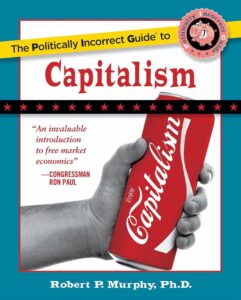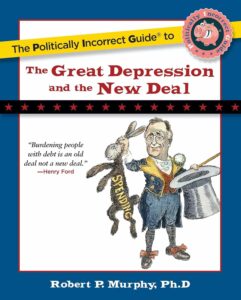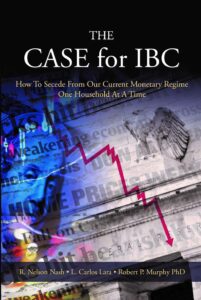NASA Forced to Revise Temperature Data, But Skeptics Looking Suspicous Now Too
As this UK Telegraph story explains, NASA had to revise its temperature records because it had failed to catch a reporting error from Russian stations. Because the records used September temperature readings for October, it originally seemed that last October was the hottest on record; that has now been changed.
However, there’s an interesting twist to this. As the Telegraph story tells it, James Hansen* held a press conference (or at least, “announced to the world”) that last October was the hottest ever; this is totally plausible, given his past history and the fact that the original, mistaken data sets said so.
Yet Gavin Schmidt claims in this “OK, you got us, big deal” post, that Hansen never made any such proclamation.
I must report, that I spent about 6 minutes using Google News’ advanced search feature (where you can filter by date), and it seems Gavin is right. I can’t find any news stories talking about the “hottest October on record,” except for those now responding to the correction!
Can anyone resurrect the good name of the deniers? It would be bad if GISS made a bonehead move, and then the Gore Haters overplayed their winning hand by inventing Hansen anecdotes.
* UPDATE: Rereading the Telegraph article, I realized that it doesn’t actually say Hansen made the announcement:
On Monday, Nasa’s Goddard Institute for Space Studies (GISS), which is run by Al Gore’s chief scientific ally, Dr James Hansen, and is one of four bodies responsible for monitoring global temperatures, announced that last month was the hottest October on record.
I still think that is a bit misleading, if Schmidt is right and NASA just released the data, without any commentary. The Telegraph story for sure leads the reader to believe that Hansen & Co. were making a big deal of this, and now have egg on their faces.
Zimbabwe Central Banker Blames Lazy Citizens for Inflation
According to this report (HT2LRC),
Reserve Bank Governor Gideon Gono is quoted in The Sunday Mail, a state-owned newspaper, as saying inflation is due to what he calls a “collective failure as a nation” to produce enough, particularly food. He calls on Zimbabweans “to actively play a part in producing for the nation.”
Zimbabwe’s inflation rate is officially 231 million percent, the highest in the world.
I think we will have to wait till after the holidays for Henderson and Hummel to pen a defense of Gono for Cato.
Another Funny Adventure from Google Alerts
Apparently Bob Murphy won first prize for his photo op with a grizzly.
The High Cost of "Green Recovery"
This piece ran in Forbes.com over the weekend. Again, it is pretty low-brow stuff for those readers who wish I would spend more time on Bohm-Bawerk’s critique of Marx’s law of surplus value. But hey, part of the function of this blog is for me to keep track of all my publications. It’s not you, it’s me.
Two Things Christians Should Keep in Mind When Dealing With All These #$#(*$# Idiots
Lately one of the personal flaws that has been bothering me the most is that I am a bit, shall we say, unmerciful, in my blog posts. Now some of my repeat targets I have at least talked with over email, and I’m pretty sure I’m not making them cry. Still, a lot of times I will hit Publish Post and then think, “Is this really something I want going up under the headline, ‘A pro-Jesus…blog’?”
When I find it necessary to recalibrate myself, and begin effecting* change rather than entertaining my loyal readers, I remind myself of two things:
(1) We are all brothers and sisters in Christ, even if some of us don’t know it. (I’m not trying to “force my religion” on anyone, but let’s face it, there are certain implications of my worldview. If I think an omnipotent Being created the universe and everyone in it, well, that includes atheists.)
(2) Jesus chose Saul, a person who was literally persecuting His followers, to be the chief publicist for His word. We shouldn’t write off anyone as “irredeemable.”
* Yes that is the proper spelling.
Issa Slips Up
This is great. Congressman Issa was grilling Neel Kashkari, playing up his outrage for the cameras at the Paulson bait & switch. But lo and behold, in his tantrum, he lets slip that the original plan was for Treasury to spend half of the money buying troubled assets from foreign institutions. In case you have forgotten, that was never part of the official plan. Some cynics and people in the know were saying that that would be the actual result, but certainly Paulson & Bush didn’t tell the American people, “We need you to lend us $350 billion so we can bail out foreign speculators.”
This guy Denninger sounds a bit goofy at first, but I think he is spot on (except for his grammar). HT2EPJ.
Brad DeLong Does His Part to Fan Fears of the Bogus Credit Crunch
Now that Paulson has almost literally admitted he was lying when he asked for the loot, I can’t believe people are still defending his story. At this point I think it’s more an issue of proving “I was right all along on this!” rather than the search for the truth. (And yes, I have taken sides so presumably I myself am subject to this bias. But the charts below will speak for themselves.)
So Brad DeLong posted the following chart:

Next to the chart, he writes, “Will somebody please tell Chari, Christiano, and Kehoe…that there is too a credit crunch?” (He also puts in a link to their paper denying a crunch, though he uses a naked URL, shocking the sensibilities of all professional bloggers.)
I must confess, at first I was surprised by this chart. I actually thought, “Huh, I guess Tyler Cowen was right in his argument with Tabarrok. Just because the absolute quantity of credit in some of these markets is at all-time highs, doesn’t really prove that the price of credit is low.”
Ah, but then I thought, “Hang on, what if DeLong is posting a chart that is completely misleading?” After all, his chart (which he copied from another site) shows the spread between Aaa and Baa yields, versus the 30-year Treasury. And we all know that Treasury yields have dropped sharply, particularly in the shorter end but also in the longer maturities. So what happens if we look directly at the interest rates corporations have to pay to borrow money, on Aaa and Baa bonds?
Fortunately, that information is easily accessible via FRED; it would have taken DeLong about 200 seconds for him to grasp reality with both hands and generate this graph:
I grant you, there is a pretty sharp spike in the Baa yields. Even so, the absolute level isn’t anything shocking.
And check out the Aaa yields. Neglecting the period 2001-2007–when all parties agree there were much-too-low yields that encouraged overleveraging and caused the current mess–the yield right now on Aaa is lower than it has been since the late 1960s. (Caveat, we should adjust all of this for expected inflation. Even so, the above chart hardly tells the story DeLong wants to spin.)
Remember folks, the “credit crunch” really means, “Credit markets returning to their conditions before the criminally insane state during the housing bubble.” In other words, Paulson, DeLong, Cowen, and all the rest giving us this line, want to (a) figure out who is responsible for the shockingly lax lending standards and artificially low interest rates during the bubble years, and (b) take $700 billion+ of taxpayers’ money to prevent the market from purging itself of these conditions.
Last thing: One might say, “OK Murphy, sure, the absolute yield on Aaa and Baa isn’t any higher now than it has been during past recessions. But still, doesn’t that huge spread reflect something real?”
Well, sure. But you know what? I am not entirely sure that the falling yields on Treasurys is being driven entirely by private sector investors. (After all, do you consider 30-year average inflation, or the creditworthiness of the US government, to be higher or lower now, versus two years ago?) I need to look into it more, but I wonder if all the Fed machinations of late are suppressing the yield on Treasurys.
Yet Another Austrian Economics Blog
The NYU Colloquium participants have decided that their weekly seminar is not inducing the Misesian vanguard quickly enough, and so now they have set up a blog. I recall the last time I linked to new Austrian blogs, and someone remarked (paraphrasing), “Just what the world needs, another econ blog.” I think it is appropriate that this new blog–the posters at which presumably reject Keynesianism–will be a good test of Say’s Law.







Recent Comments